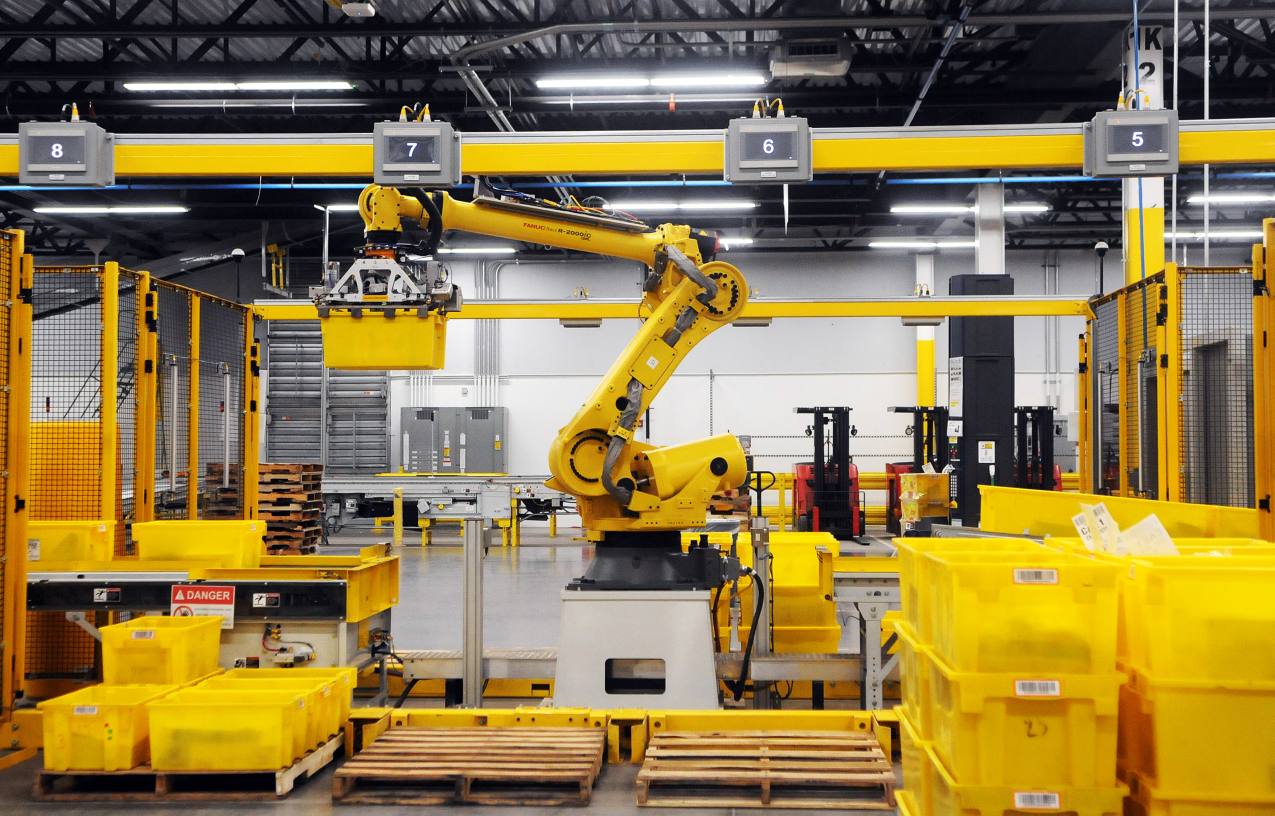Modern logistics buildings are among the key beneficiaries of the digital revolution, with the acceleration of technology and the internet transforming the way we live, work, and play.
Almost every aspect of our lives has been fundamentally changed, and these developments have prompted the decline of our dependency on many traditional sectors, such as shop front retailers. Online shopping, whether doing the weekly food shop, or finding the next gadget on AO.com, offers a level of convenience demanded by modern lifestyles. One barely needs mention that the outbreak of Covid-19 and subsequent public lockdowns acted as a propellant to growth for many online retailers. Between January 2020 and January 2021, online retail sales in the UK, as a percentage of total retail sales, grew from 19.5% to 35.2%, the equivalent of 5 years growth in just one year.1
Amazon is by far the most obvious example of a business that has fully taken advantage of, and furthered, the shift to online shopping, putting its focus on ever-faster delivery times and expanding its product offering. To meet customer demand for next-day and same-day deliveries of anything from baby formula to Apple MacBooks, Amazon and other e-commerce retailers have focused their efforts on developing high-tech and well-located fulfilment solutions. However, instead of owning the property, they and many other ecommerce businesses are often the tenant, leasing space from a Real Estate Investment Trust (REIT) landlord.
In advanced warehouses acting as the storage and supply function for the biggest online e-tailers, ‘collaborative robot solutions’, known as ‘cobots’, now navigate a vast warren of shelving, picking stock and supplying the boxes to their human counterparts ready for packing.
These ‘cobots’ are just one part of the increasingly sophisticated generation of logistics real estate that has developed in recent years. No longer are logistics spaces used simply for storage, they are part of a complex supply chain solution, marked by increasing rates of automation. One of the most well-known REITs in this sector, Tritax Big Box, cites 54% of its assets as ‘automated’, an example being their c.£100m asset in Erith. Ocado, who are the sole tenant, have spent c.£200m on the ‘cobot’ and fulfilment technology inside the building.
Bolstered by the growth of the digital world and the grip of internet shopping, logistics centres are in increasing demand, with this coming in various forms. Modern logistics buildings are not uniform in size or purpose, the span of logistics real estate stretches from large ‘big box’ warehouses to much smaller urban warehouses.
A typical ‘big box’ could be more than 10,000 sq. m in size, roughly the size of a rugby pitch, with some, such as those located on the M1 near Milton Keynes, over 10 times larger. These vast spaces are generally located centrally and near motorway junctions, often filled with sophisticated fulfilment technology and serve as the storage and supply function for e-commerce.
Additionally, there is growing demand for smaller logistics warehouses, located within or near towns and cities, that offer a more immediate fulfilment option for retailers and customers than larger warehouses. The smaller urban warehouses face rising demand as the centres for ‘last mile’ distribution as the nation’s appetite for next day – or even same-day – delivery proliferates. These smaller hubs enable e-tailers to be nimbler and provide products quickly to nearby homes.









